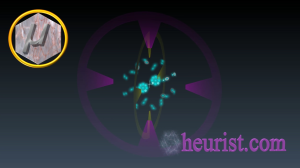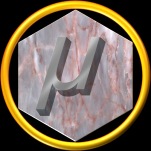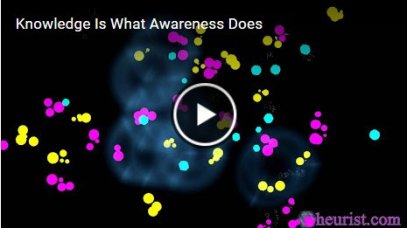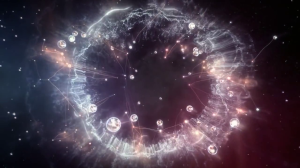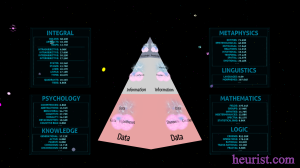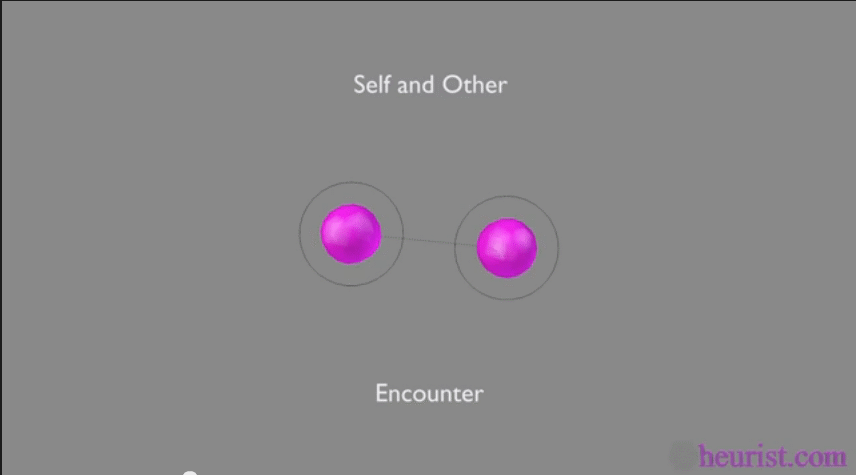Are sets, in an abstract sense, one of the most fundamental objects in contemporary mathematics?

Yes and no.
The equivalence relation lies deeper within the knowledge representation and it’s foundation.
There are other knowledge prerequisites which lie even deeper within the knowledge substrate than the equivalence relation.
The concepts of a boundary, of quantity, membership, reflexivity, symmetry, transitivity, and relation are some examples.
Sep 9, 2017 | Categories: Insight, Knowledge, Knowledge Representation, Language, Learning, Linguistics, Mathematics, Mathesis Generalis, Mathesis Universalis, Metamathematics, Metaphysics, Noosphere, Philosophy, Philosophy of Learning, Philosophy Of Mind, Semantic Web, Semantics | Tags: knowledge, Language, learning, Linguistics, Logica Generalis, Logica Universalis, Mathematica Generalis, Mathematica Universalis, Mathesis Generalis, Mathesis Universalis, Philosophy, understanding | Leave a comment
Limits of Category Theory and Semiotics
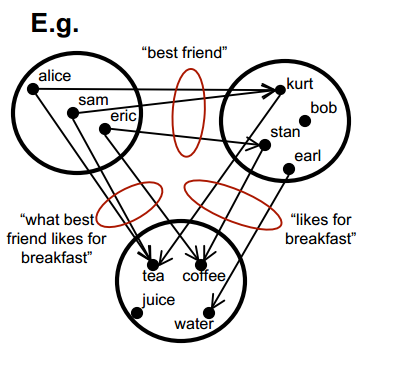
They are wonderful tools to explain much of our world, but lack ‘The Right Stuff’ to handle the metaphysical underpinnings of anything near a Philosophy of Mind, Philosophy of Language , or a Philosophy of Learning.
This is, because Category Theory specialises on roughly half of the Noosphere. It does a wonderful job on exteriority, but cannot sufficiently describe nor comprehensively access interiority.

Therefore, as is the case with Semiotics, has limited metaphysical value with respect to philosophy in general.


For example: philosophies of mind, language, or learning are not possible using only category theoretical tools and/or semiotics.
Here is an example of one attempt which fails in this regard: http://nickrossiter.org.uk/proce…
(and here: VisualizationFoundationsIEEE)
Here are two problems (of many) in the paper:
4.4.2 Knowledge is the Terminal Object of Visualisation states:
“The ultimate purpose of the visualisation process is to gain Knowledge of the original System. When this succeeds (when the diagram commutes) then the result is a ‘truth’ relationship between the Knowledge and the System. When this process breaks down and we fail to deduce correct conclusions then the diagram does not commute.”
I want to also comment on Figure 3 (which also exposes missing or false premises in the paper), but I will wait until I have discussed the assertions in the quote above which the authors of this paper reference, accept, and wish to justify/confirm.
1) The purpose of a representation is NOT to gain knowledge; rather, to express knowledge. Also, truth has nothing to do with knowledge except when that value is imposed upon it for some purpose. Truth value is a value that knowledge may or not ‘attend’ (participate in).
1a) The ‘truth value’ of the System (‘system’ is a false paradigm [later, perhaps] and a term that I also vehemently disagree with) does not always enter into the ‘dialogue’ between any knowledge that is represented and the observer interpreting that knowledge.
2) The interpretation of a representation is not to “deduce correct conclusions”; rather, to understand the meaning (semantics and epistemology) of what is represented. ‘Correct’ understanding is not exclusive to understanding nor is it necessary or sufficient for understanding a representation, because that understanding finds expression in the observer.
2a) ‘Correct’, as used in this paragraph, is coming from the outside (via the choice of which data [see Fig. 3] is represented to the observer) and may have no correspondence (hence may never ever commute) whatever to what that term means for the observer.
The authors are only talking about ontologies. That is a contrived and provincial look at the subject they are supposing to examine.
There may (and usually are) artefacts inherent in any collection and collation of data. The observer is forced to make ‘right’ (‘correct’) conclusions from that data which those who collected it have ‘seeded’ (tainted) with their own volition.
‘System’ (systematising) anything is Reductionism. This disqualifies the procedure at its outset.
They are proving essentially that manipulation leads to a ‘correct’ (their chosen version) representation of a ‘truth’ value.
I could tie my shoelaces into some kind of knot and think it were a ‘correct’ way to do so if the arrows indicate this. This is why paying too much attention to a navigation system can have one finding themselves at the bottom of a river!
The paper contains assumptions that are overlooked and terms that are never adequately defined! How can you name variables without defining their meaning? They then serve no purpose and must be removed from domain of discourse.
Categorical structures are highly portable, but they can describe/express only part of what is there. There are structure, dynamics, and resonance that ontology and functionalism completely turns a blind eye to.
The qualities of Truth, Goodness, Beauty, Clarity,… (even Falsehood, Badness, Ugliness, Obscurity,…) can be defined and identified within a knowledge representation if the representation is not restricted to ontology alone.
In order to express these qualities in semiotics and category theory, they must first be ontologised funtionally (reduced). Trying to grasp them with tools restricted to semiotics and category theory is like grasping into thin air.
That is actually the point I’m trying to make. Category Theory, and even Semiotics, each have their utility, but they are no match for the challenge of a complete representation of knowledge.
Aug 29, 2017 | Categories: Category Theory, Knowledge, Knowledge Representation, Learning, Linguistics, Mathesis Generalis, Mathesis Universalis, Metaphysics, Noosphere, Philosophy, Philosophy of Language, Philosophy of Learning, Philosophy Of Mind, Reductionism, Semantic Web, Semantics, Semiology, Semiotics, Understanding, Wisdom | Tags: Category Theory, insight, knowledge, Knowledge Representation, Language, learning, Philosophy, Philosophy of Language, Philosophy of Learning, Philosophy Of Mind, Reductionism, Search, Semantic Search, Semantic Web, Semantics, Semiology, Semiotics, understanding, wisdom | Leave a comment
Universal Constants, Variations, and Identities #19 (Inverse Awareness)

Universal Constants, Variations, and Identities
#19 The Inverse Awareness Relation
The Inverse Awareness Relation establishes a fundamental relationship in our universe:
May 15, 2017 | Categories: Discernment, Holons, Holors, Hyperbolic Geometry, Identities, Insight, Knowledge, Knowledge Representation, Language, Learning, Linguistics, Mathesis Generalis, Mathesis Universalis, Metamathematics, Metaphysics, Philosophy, Philosophy of Language, Philosophy of Learning, Philosophy Of Mind, Semantic Web, Semantics, Understanding, Universal Constants, Variations, and Identities, Variations, Wisdom | Tags: knowledge, Language, learning, Linguistics, LogicaUniversalis, Mathesis Universalis, Philosophia Universalis, Philosophy, Philosophy of Language, Philosophy of Learning, Philosophy Of Mind, understanding | Leave a comment
Is Real World Knowledge More Valuable Than Fictional Knowledge?
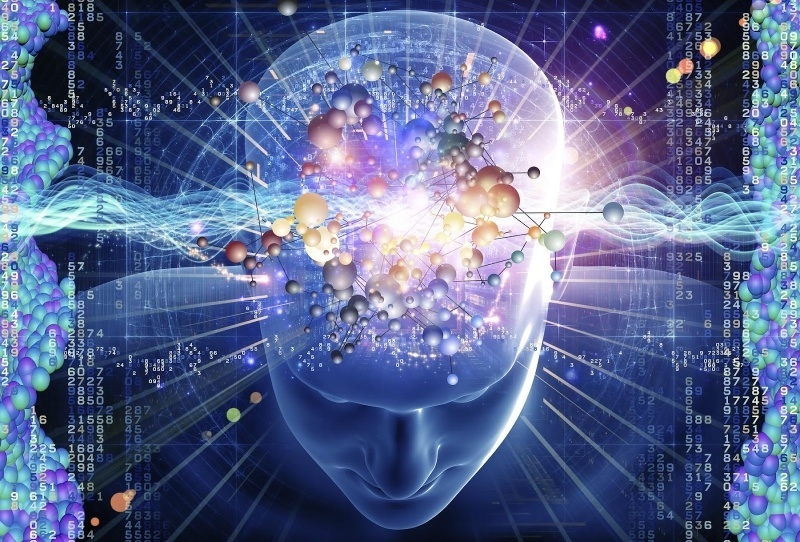
No.
Here an excerpt from a short summary of a paper I am writing that provides some context to answer this question:
What Knowledge is not:
Knowledge is not very well understood so I’ll briefly point out some of the reasons why we’ve been unable to precisely define what knowledge is thus far. Humanity has made numerous attempts at defining knowledge. Plato taught that justified truth and belief are required for something to be considered knowledge.
Throughout the history of the theory of knowledge (epistemology), others have done their best to add to Plato’s work or create new or more comprehensive definitions in their attempts to ‘contain’ the meaning of meaning (knowledge). All of these efforts have failed for one reason or another.
Using truth value and ‘justification’ as a basis for knowledge or introducing broader definitions or finer classifications can only fail.
I will now provide a small set of examples of why this is so.
Truth value is only a value that knowledge may attend.
Knowledge can be true or false, justified or unjustified, because
knowledge is the meaning of meaning
What about false or fictitious knowledge? [Here’s the reason why I say no.]
Their perfectly valid structure and dynamics are ignored by classifying them as something else than what they are. Differences in culture or language even make no difference, because the objects being referred to have meaning that transcends language barriers.
Another problem is that knowledge is often thought to be primarily semantics or even ontology based. Both of these cannot be true for many reasons. In the first case (semantics):
There already exists knowledge structure and dynamics for objects we cannot or will not yet know.
The same is true for objects to which meaning has not yet been assigned, such as ideas, connections and perspectives that we’re not yet aware of or have forgotten. Their meaning is never clear until we’ve become aware of or remember them.
In the second case (ontology): collations that are fed ontological framing are necessarily bound to memory, initial conditions of some kind and/or association in terms of space, time, order, context, relation,… We build whole catalogues, dictionaries and theories about them: Triads, diads, quints, ontology charts, neural networks, semiotics and even the current research in linguistics are examples.
Even if an ontology or set of them attempts to represent intrinsic meaning, it can only do so in a descriptive ‘extrinsic’ way. An ontology, no matter how sophisticated, is incapable of generating the purpose of even its own inception, not to mention the purpose of the objects to which it corresponds.
The knowledge is not coming from the data itself, it is always coming from the observer of the data, even if that observer is an algorithm.
Therefore ontology-based semantic analysis can only produce the artefacts of knowledge, such as search results, association to other objects, ‘knowledge graphs’ like Cayley,…
Real knowledge precedes, transcends and includes our conceptions, cognitive processes, perception, communication, reasoning and is more than simply related to our capacity of acknowledgement.
In fact knowledge cannot even be completely systematised; it can only be interacted with using ever increasing precision.
[For those interested, my summary is found at: A Precise Definition of Knowledge – Knowledge Representation as a Means to Define the Meaning of Meaning Precisely: http://bit.ly/2pA8Y8Y
May 11, 2017 | Categories: Consciousness, Insight, Knowledge, Language, Learning, Linguistics, Mathesis Generalis, Mathesis Universalis, Metamathematics, Metaphysics, Philosophy, Philosophy of Language, Philosophy of Learning, Philosophy Of Mind, Semantic Web, Semantics, Understanding, Wisdom | Tags: Big Data, Characteristica Universalis, insight, knowledge, Knowledge Representation, Language, learning, Linguistics, Logica Universalis, Mathematica Universalis, Mathesis Universalis, Metaphysica Universalis, Metaphysics, Philosophia Universalis, Philosophy, Philosophy of Language, Philosophy of Learning, Philosophy Of Mind, Scientia Universalis, Semantic Web, Semantics, understanding, wisdom | Leave a comment
Does Knowledge Become More Accurate Over Time?
Change lies deeper in the knowledge substrate than time.
Knowledge is not necessarily coupled with time, but it can be influenced by it. It can be influenced by change of any kind: not only time.
Knowledge may exist in a moment and vanish. The incipient perspective(s) it contains may change. Or the perspective(s) that it comprises may resist change.
Also, knowledge changes with reality and vice versa.
Time requires events to influence this relationship between knowledge and reality.
Knowledge cannot be relied upon to be a more accurate expression of reality, whether time is involved or not, because the relationship between knowledge and reality is not necessarily dependent upon time, nor is there necessarily a coupling of the relationship between knowledge and reality. The relationships of ‘more’ and ‘accurate’ are also not necessarily coupled with time.
Example: Eratosthenes calculated the circumference of the Earth long before Copernicus published. The ‘common knowledge’ of the time (Copernicus knew about Eratosthenes, but the culture did not) was that the Earth was flat.
May 10, 2017 | Categories: change, Consciousness, Insight, Knowledge, Knowledge Representation, Learning, Mathesis Universalis, Metamathematics, Metaphysics, Philosophy, Philosophy of Language, Philosophy Of Mind, Semantic Web, Semantics, Understanding, Wisdom | Tags: Awareness, Characteristica Generalis, Characteristica Universalis, Discernment, insight, knowledge, Knowledge Representation, learning, Logica Generalis, Logica Universalis, Mathematica Generalis, Mathematica Universalis, Mathesis Generalis, Mathesis Universalis, Metaphysica Generalis, Metaphysica Universalis, Metaphysics, Philosophia Generalis, Philosophia Universalis, Philosophy of Language, Philosophy of Learning, Philosophy Of Mind, Scientia Generalis, Scientia Universalis, understanding, wisdom | Leave a comment
Universal Constants, Variations, and Identities #18 (Dimension)
Universal Constants, Variations, and Identities (Dimension)
#18 Dimension is a spectrum or domain of awareness: they essentially build an additional point of view or perspective.
We live in a universe of potentially infinite dimension. Also, there are more spatial dimensions than three and more temporal dimensions than time (the only one science seems to recognize). Yes, I’m aware of what temporal means; Temporal is a derived attribute of a much more fundamental concept: Change. One important caveat: please bear in mind that my little essay here is not a complete one. The complete version will come when I publish my work.
The idea of dimension is not at all well understood. The fact is, science doesn’t really know what dimension is; rather, only how they may be used! Science and technology ‘consume’ their utility without understanding their richness. Otherwise they would have clarified them for us by now.
Those who may have clarified what they are get ignored and/or ridiculed, because understanding them requires a larger mental ‘vocabulary’ than Physicalism, Reductionism, and Ontology can provide.
Our present science and technology is so entrenched in dogma, collectivism, and special interest, that they no longer function as they once did. The globalist parasites running our science and technology try their best to keep us ‘on the farm’ by restricting dimension, like everything else, to the purely physical. It’s all they can imagine.
That’s why many of us feel an irritation without being able to place our finger on it when we get introduced to dimension. We seem to ‘know’ that something just doesn’t ‘rhyme’ with their version.
Time and space may be assigned dimensionality, in a purely physical sense if necessary, but there are always underlying entities much deeper in meaning involved that are overlooked and/or remain unknown which provide those properties with their meaning. This is why the more sensitive among us sense something is wrong or that something’s missing.
Let us temporarily divorce ourselves from the standard ‘spatial’ and ‘temporal’ kinds of ‚dimension’ for a time and observe dimension in its essence.
Definitions are made from them: in fact, dimensions function for definitions just as organs do for the body. In turn, dimension has its own set of ‘organs’ as well! I will talk about those ‘organs’ below.
Dimension may appear different to us depending upon our own state of mind, level of development, kind of reasoning we choose, orientation we prefer, expectations we may have,… but down deep…
Everything, even attributes of all kinds, involve dimension. We must also not forget partial dimension such as fractals over complex domains and other metaphysical entities like mind and awareness which may or may not occupy dimension. Qualia (water is ‘wet’, angry feels like ‘this’, the burden is ‘heavy’) are also dimensional.
Dimensions are ‘compasses’ for navigating conceptual landscapes. We already think in multiple dimension without even being aware of it! Here’s is an example of how that is:
[BTW: This is simply an example to show how dimension can be ‘stacked’ or accrued. The items below were chosen arbitrarily and could be replaced by any other aspects.]
♦ Imagine a point in space (we are already at 3d [x,y,z]) – actually at this level there are even more dimensions involved, but I will keep this simple for now.
♦ it moves in space and occupies a specific place in time (now 4d) 3d + 1 time dimension
♦ say it changes colour at any particular time or place (5d)
♦ let it now grow and shrink in diameter (6d)
♦ if it accelerates or slows its movement (7d)
♦ if it is rotating (8d)
♦ if it is broadcasting a frequency (9d)
♦ what if it is aware of other objects or not (10d)
♦ say it is actively seeking contact (connection) with other objects around it (11d)
♦ … (the list may go on and on)
As you can see above, dimensions function like aspects to any object of thought.
Dimensionality becomes much clearer when we free ourselves from the yoke of all that Physicalism, Reductionism, and Ontology.
Let’s now look at some of their ‘organs’ as mentioned above as well as other properties they have in common:
- They precede all entities except awareness.
- Awareness congeals into them.
- They form a first distinction.
- They have extent.
- They are integrally distributed.
- They have an axial component.
- They spin.
- They vibrate.
- They oscillate.
- They resonate.
- They may appear as scalar fields.
- Their references form fibrations.
- They are ‘aware’ of self/other.
- Their structural/dynamic/harmonic signature is unique.
- They provide reference which awareness uses to create perspective meaning.
- Holons are built from them.
http://mathesis-universalis.com
Sacred Geometry 29 by Endre @ RedBubble:
http://www.redbubble.com/people/endre/works/6920405-sacred-geometry-29?p=poster
Sep 7, 2016 | Categories: Constants, Holons, Holors, Knowledge, Knowledge Representation, Language, Learning, Linguistics, Mathematics, Mathesis Generalis, Mathesis Universalis, Meta Logic, Metamathematics, Metaphysics, Perspective, Philosophy, Scalars, Semantics, Understanding, Variations, Wisdom | Tags: BigData, First Distinction, insight, knowledge, Knowledge Representation, learning, Logica Universalis, Mathesis Universalis, Metalogic, Metaphysics, Philosophia Universalis, Scalar Field, Scalars, Scientia Universalis, Semantics, understanding, Universal Constants, Variances, wisdom | Leave a comment
HUD Fly-by Test
Don’t take this as an actual knowledge representation; rather, simply a simulation of one. I’m working out the colour, transparent/translucent, camera movements, and other technical issues.
In any case you may find it interesting.
The real representations are coming soon.
Aug 21, 2016 | Categories: Big Data, Holons, Holors, Hyperbolic Geometry, Knowledge, Knowledge Representation, Language, Learning, Linguistics, Logic, Long Data, Mathesis Generalis, Mathesis Universalis, Meta Logic, Metamathematics, Metaphysics, Philosophy, Understanding, Wisdom | Tags: BigData, Constants, Hyperbolic Geometry, insight, knowledge, Knowledge Representation, learning, Logica Generalis, Logica Universalis, Mathesis Generalis, Mathesis Universalis, Metalogic, Metamathematics, Metaphysics, Philosophia Generalis, Philosophia Universalis, Philosophy, Philosophy of Language, Philosophy of Learning, Philosopohy of Mind, Scientia Universalis, understanding, Universal Constants, Universalis, wisdom | Leave a comment
A New Kind of Knowledge Representation Is Coming to Be!
The project is now coming to conclusion (finally). In this video I show an example knowledge molecule being ‘examined’ by the knowledge representation.
I’ve hidden the other actors in this demonstration and have simplified the instrumentation to preserve my priority on my work.
Be patient! It won’t be long now… I have the theoretical underpinnings already behind me. Now it’s only about the representation of that work.
Aug 12, 2016 | Categories: Big Data, Holons, Holors, Knowledge, Knowledge Representation, Language, Learning, Linguistics, Long Data, Mathematics, Mathesis Generalis, Mathesis Universalis, Meta Logic, Metamathematics, Metaphysics, Philosophy, Semantics, Understanding, Wisdom | Leave a comment
Universal Constants, Variations and Identities – #14 (Singular/Plural)
Universal Constants, Variations and Identities
#14 Singular and plural arise together. (Singular/Plural)
There is no singular without a plural representation except in the non-dual.
See http://mathesis-universalis.com for more information.
#Knowledge #Wisdom #Understanding #Learning #Insight #Constants #Variances #Philosophy #MathesisUniversalis #ScientiaUniversalis #PhilosophicaUniversalis #LogicaUniversalis #MetaMathematics #MetaLogic #MetaScience #MetaPhysics #MetaPhilosophy #Singular #Plural
Feb 3, 2015 | Categories: Constants, Identities, Insight, Knowledge, Learning, Mathesis Universalis, Metamathematics, Metaphysics, Philosophy, Wisdom | Tags: Constants, insight, knowledge, learning, Logica Universalis, Mathesis Universalis, Metalogic, MetaPhilosophy, Metaphysics, Metascience, Philosophia Universalis, Philosophy, Plural, representation, Scientia Universalis, Singular, Singular and plural, understanding, Universal Constants, Variances, wisdom | Leave a comment
Universal Constants, Variations and Identities #13 (Knowledge)
Universal Constants, Variations and Identities
#13 Knowledge is what awareness does. (Knowledge)
I’ve published this before elsewhere, but it must be restated now for what is to follow (I’m starting a new octave).
#Knowledge #Wisdom #Understanding #Learning #Insight #Constants #Variances #Metaphysics #Philosophy #MathesisUniversalis #ScientiaUniversalis #PhilosophiaUniversalis #LogicaUniversalis #MetaMathematics #MetaLogic #MetaScience #MetaPhysics #MetaPhilosophy #Awareness
Feb 3, 2015 | Categories: Big Data, BigData, Identities, Knowledge, Knowledge Representation, Learning, Logic, Mathematics, Mathesis Universalis, Metamathematics, Metaphysics, Philosophy, Science, Understanding, Wisdom | Tags: Awareness, Constants, Identities, insight, knowledge, learning, Logica Universalis, Mathesis Universalis, Metalogic, Metamathematics, MetaPhilosophy, Metaphysics, Metascience, Philosophia Universalis, Philosophy, Scientia Universalis, understanding, Universal Constants, Variances, wisdom | Leave a comment
Universal Constants and Variances
#6 Reality is composed of whole parts. (Holons)
Arthur Koesler coined the term ‘Holon’ that refers to entities as both wholes and parts of some other whole.
https://en.wikipedia.org/wiki/Holon_%28philosophy%29
For example: a whole atom is part of a whole molecule, which is part of a whole cell, which is part of a whole organism,… Each of these entities are neither a whole or a part; rather, a whole part or Holon.
There’s a 2000 year old philosophical squabble between atomists and holists: “Which is ultimately real – the whole or the part?” The answer is neither or both, if you prefer…
There are only ‘whole-parts’: Holons.
[More are coming soon in a new post…]
Dec 19, 2014 | Categories: Holons, Knowledge, Mathematics, Mathesis Universalis, Metamathematics, Metaphysics, Philosophy, Understanding, Wisdom | Tags: Constants, Holons, knowledge, learning, Logica, Logica Universalis, Mathesis, Mathesis Universalis, Metalogic, Metaphysics, Philosophia, Philosophia Universalis, Philosophy, Scientia, Scientia Universalis, understanding, Universal Constants, Universalis, Variances, wisdom | Leave a comment
Complexity At the Cost of Being Simple
 Complexity At the Cost of Being Simple
Complexity At the Cost of Being Simple
There are grievous problems with complexity ‘science’. Some of those problems are apparent here. I will note a few of them.
Reductionism at @13:00 is completely annoying. Epiphenomenological aspects of the problem are completely missing when you reduce into pure binary! It’s like taking you and your emotional life (with its incipient impact on your immune system) and reducing it down to DNA!
“There are way more problems than there are solutions.” @17:00!Sure! When you peel away the contextual embedding of any problem (via reductionism), then you’ve just committed a sort of lobotomy!
The definition of NP at @23:00 while correct, reveals how misguided this theory is. Not all choices are guesses, and correct answers aren’t always ‘lucky’.
Check out the response one receives from the system (algorithm) at @25:11.Did you notice something’s wrong or what?
@26:51 Does anyone notice who is supplying the criterion for the value of ‘correct’? The algorithm is being falsely attributed with properties it can only be endowed with and not arrive at on its own!
@30:00 The rules to Tetris are known by both (algorithm and human) however, the proof of a truth value cannot be computationally arrived at in NP, yet the proof – via a human being AND the skills necessary to ‘prove’ anything can do it in P! It should be obvious that we are going about the whole thing in the wrong way by now!
@31:00 the P<>NP Problem is described. The problem is meaningless and yet you’ll get a Millenium Prize for solving it! (Even sane and not sane find themselves in the balance! Whoa!) If you continue listening to the justification, you might want to be near a bathroom.
@32:27 Check out how NP is being determined to be ‘more’ than P! “Nobody in their right mind…”, “Obviously insane…”,… so naturally NP must be more than P!
Sounds reasonable? I don’t think so…
@32:37 Watch the disappointment: “…very annoying…” and I wonder why? The question is meaningless! Other phrasings of the P<>NP Problem are nothing special and are completely obvious: “You can’t engineer luck.” (Excuse me, but isn’t that the definition of luck in the first place?) and “Solving problems is harder than checking them.”
@34:17 “What could we possibly say… this is all kind of weired…” I don’t know anymore either and I sure hope you don’t tell me! Are we at the end of the lecture already?
@35:53 Now we are getting to the ‘meat of the potato’. If we just “believe in… have faith in…” P<>NP, then Tetris is within NP-P! Wait a minute? That doesn’t sound like any proof to me… perhaps it’s an axiom? We’ll see. It sure looks like begging the question, but I want to be convinced so I’ll just have to wait.
@36:43 He then moves on to a ‘proof’ that looks more like a set of definitions! NP-hard and NP-complete are correctly defined, but they do not prove anything! Tetris and chess act like a definitions, as well!
@40:33 Now he wants to talk about reductions. Wait, weren’t we talking about them already? Let’s take a look…
Yes, we stand upon giants [Authoritarianism]@46:15(Karp’s 3-Partition) and don’t need to think about it anymore and just reconfirm that all NP-complete is reducible to each other! You find some problem that was defined by a “giant” to be a member of your classification and then show that yours is at least as hard @48:47.
If we happen to find a better solution to a member of NP-complete, then either the whole house of cards falls down or we simply reclassify (by reduction) it to P! Now believe it or believe what you want, okay?
There will be a time when we have to revisit mathematics and do a house cleaning of this ‘cuddle muddle’.
Nov 2, 2014 | Categories: Artificial Intelligence, Consciousness, Knowledge, Learning, Mathematics, Mathesis Universalis, Metaphysics, Psyence, Science and Technology Run Amok, Social Engineering | Tags: ai, artifical intelligence, Artificial Intelligence, BadMathematics, BadPhilosophy, BadScience, Complexity, fraud, insight, knowledge, learning, NP-complete, Psyence, ScienceRunAmok, Tetris, understanding, wisdom | Leave a comment
Good News! It’s Not Just Particles! It’s Properties and Patterns of Particles! – Max Tegmark
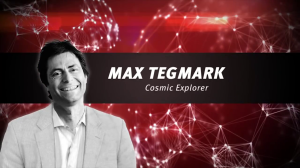 “Consciousness is a mathematical pattern.”
“Consciousness is a mathematical pattern.”
Is it possible to explain the phenomenon of purpose away with another phenomenon of emergence?
I wonder how he defines purpose itself?
Isn’t consciousness more than our senses?
Why are we only looking at states of matter and leave out stages, lines, levels, types,…?
Who is doing the “feeling” he’s describing?
Who gives the particles their work to do?
How are the particles different between dead and living beings?
So we are to replace our questions with a certainty of the phenomenon of consciousness and then explain that in terms of an interpretation of same?
I’m not a religious person, but the video is starting to sound like I should be one!
Is this what we get when a physicist tries to do philosophy? Oh my!
Sep 12, 2014 | Categories: Artificial Intelligence, Consciousness, Insight, Knowledge, Language, Learning, Mathematics, Metaphysics, Philosophy, Physics, Science, Science and Technology Run Amok, Semantics, Understanding, Wisdom | Tags: BadPhilosophy, BadScience, insight, knowledge, learning, ScienceRunAmok, understanding, wisdom | Leave a comment
David Chalmers – Consciousness is Fundamental, Consciousness is Universal
Consciousness Is Fundamental (@09:27)
Consciousness Is Universal (@11:35)
Modern philosophy that likely is true!
I was expecting that ill feeling I get listening to modern philosophers and it started out that way, but suddenly!!! It changed!
He’s talking about my work!
(https://independent.academia.edu/CareyButler/Papers)
Now, if he can free himself from the brain-based paradigms of consciousness…
Sep 5, 2014 | Categories: Consciousness, Insight, Knowledge, Metaphysics, Philosophy | Tags: insight, knowledge, learning, Philosophy Of Mind, understanding, wisdom | Leave a comment
Knowledge Is What Awareness Does – Knowledge Representation as a Means to Define Meaning Precisely
Video is finally here!
Sep 3, 2014 | Categories: Artificial Intelligence, BigData, Holons, Holors, Insight, Knowledge, Knowledge Representation, Language, Learning, Linguistics, Logic, Mathematics, Mathesis Universalis, Metaphysics, Philosophy, Semantics, Understanding, Wisdom | Tags: ArtificialIntelligence, insight, knowledge, Language, learning, Linguistics, OrganicIntelligence, Philosopohy, Semantics, understanding, wisdom | Leave a comment
Self-referential Paradoxum In Knowledge Representation
What do these two pictures share in common?
They represent structure and dynamics (continuity, connectedness, and boundary [of which topology is only ONE example!]) distributed over multiple and partial dimension. That’s why they interest me and are of use. I use them to represent knowledge, because they are found in our knowledge!
They always have a concealed twist (internal dynamics). You need to leave our 3D rational domain to capture their meaning though. I’ve studied these shapes for a long time now and use them in my work. Break the figures or logic apart and notice how you can tuck the parts into a cloud shape (ambiguity) and make the systems work.
Aug 29, 2014 | Categories: Holors, Knowledge, Knowledge Representation, Language, Learning, Linguistics, Logic, Mathematics, Mathesis Universalis, Metaphysics, Philosophy, Physics, Science, Semantics, Understanding, Wisdom | Tags: FractalLogic, insight, knowledge, learning, Logic, Metalogic, understanding, wisdom | Leave a comment
A Precise Definition of Knowledge – Knowledge Representation as a Means to Define the Meaning of Meaning Precisely
A Precise Definition of Knowledge
Knowledge Representation as a Means to Define the Meaning of Meaning Precisely
Copyright © Carey G. Butler
August 24, 2014
What is this video about?
In this introductory video I would like to explain what knowledge representation is, how to build and apply them. There are basically three phases involved in the process of building a knowledge representation. Acquisition of data (which includes staging), collation and the representation itself. The collation and the representation phases of the process are mentioned here, but I will explain them further in future videos.
You are now watching a simulation of the acquisition phase as it collects and stores preliminary structure from the data it encounters in terms of the vocabulary contained within that data. Acquisition is a necessary prerequisite for the collation phase following it, because the information it creates from the data are used by the collation algorithms which then transform that information into knowledge.
The statistics you are seeing tabulated are only a small subset of those collected in a typical acquisition phase. Each of these counters are being updated in correspondence to the recognition coming from underlying parsers running in the background. Depending upon the computer resources involved in the
acquisition, these parsers may even even run concurrently as is shown in this simulation.
The objects you see moving around in the video are of two different kinds: knowledge fields or knowledge molecules. Those nearest to you are the field representations of the actual data being collected called knowledge fields. They could represent an individual symbol, punctuation, morpheme, lexeme, word, emotion, perspective, or some other unit of information in the data. Each of them contain their own signature – even if their value, state or other intrinsic properties are unknown or indeterminate during the acquisition.
Those farther away from the view are clusters of fields which have already coalesced into groups according to shared dynamically adaptive factors such as similarity, relation, ordinality, cardinality,…
These ‘molecules’ also contain their own set of signatures and may be composed of a mixture of fields, meta-fields and hyper-fields that are unique to all others.The collation phase has the job of assigning these molecules to their preliminary holarchical domains which are then made visible in the resulting knowledge representation. Uniqueness is preserved even if they contain common elements with others in the domain they occupy. Clusters of knowledge molecules and/or fields grouped together are known as ‘knowledge domains’, ‘structural domains’,’dynamical domains’ or ‘resonance domains’, depending upon which of their aspects is being emphasized.
We now need a short introduction to what knowledge representation is in order to explain why you’re seeing these objects here.
What is Knowledge Representation?
Knowledge representation provides all of the ways and means necessary to reliably and consistently conceptualize our world. It helps us navigate landscapes of meaning without losing our way; however, navigational bearing isn’t the only advantage. Knowledge representation aids our recognition of what changes when we change our world or something about ourselves. It does so, because even our own perspective is included in the representation. It can even reveal to us when elements are missing or hidden from our view!
It’s important to remember that knowledge representation is not an end, rather a means or process that makes explicit to us everything we already do with what we come to be aware of. A knowledge representation must be capable of representing knowledge such that it, like a book or other artifact, brings awareness of that knowledge to us. When we do it right, it actually perpetuates our understanding by providing a means for us to recognize, interpret (understand) and utilize the how and what we know as it relates to itself and to us. In fact – knowledge representation even makes it possible to define knowledge precisely!
What Knowledge is not!
Knowledge is not very well understood so I’ll briefly point out some of the reasons why we’ve been unable to precisely define what knowledge is thus far. Humanity has made numerous attempts at defining knowledge. Plato taught that justified truth and belief are required for something to be considered knowledge. Throughout the history of the theory of knowledge (epistemology), others have done their best to add to Plato’s work or create new or more comprehensive definitions in their attempts to ‘contain’ the meaning of meaning (knowledge). All of these efforts have failed for one reason or another. Using truth value and justification as a basis for knowledge or introducing broader definitions or finer classifications can only fail. I will now provide a small set of examples of why this is so.
Truth value is only a value that knowledge may attend. Knowledge can be true or false, justified or unjustified, because knowledge is the meaning of meaning. What about false or fictitious knowledge? Their perfectly valid structure and dynamics are ignored by classifying them as something else than what they are. Differences in culture or language make even make no difference, because the objects being referred to have meaning that transcends language barriers.
Another problem is that knowledge is often thought to be primarily semantics or even ontology based! Both of these cannot be true for many reasons. In the first case (semantics): There already exists knowledge structure and dynamics for objects we cannot or will not yet know. The same is true for objects to which meaning has not yet been assigned,such as ideas, connections and perspectives that we’re not yet aware of or have forgotten. Their meaning is never clear until we’ve become aware of or remember them.
In the second case (ontology): collations that are fed ontological framing are necessarily bound to memory, initial conditions of some kind and/or association in terms of space, time, order, context, relation,… We build whole catalogs, dictionaries and theories about them! Triads, diads, quints, ontology charts, neural networks, semiotics and even the current research in linguistics are examples. Even if an ontology or set of them attempts to represent intrinsic meaning, it can only do so in a descriptive (extrinsic) way.
An ontology, no matter how sophisticated, is incapable of generating the purpose of even its own inception, not to mention the purpose of objects to which it corresponds! The knowledge is not coming from the data itself, it’s always coming from the observer of the data – even if that observer is an algorithm!
Therefore ontology-based semantic analysis can only produce the artifacts of knowledge, such as search results, association to other objects, ‘knowledge graphs’ like Cayley,.. Real knowledge precedes, transcends and includes our conceptions, cognitive processes, perception, communication, reasoning and is more than simply related to our capacity of acknowledgment. In fact knowledge cannot even be completely systematized, it can only be interacted with using ever increasing precision!
- What is knowledge then?
• Knowledge is what awareness does.
• Awareness of some kind and at some level is the only prerequisite for knowledge and is the substrate upon which knowledge is generated.
• Awareness coalesces, interacts with and perpetuates itself in all of its form and function.
• Awareness which resonates (shares dynamics) at, near, or in some kind of harmony (even disharmony) with another tends to associate (disassociate) with that other in some way.
• These requisites of awareness hold true even for objects that are infinite or indeterminate.
• This is why knowledge, the meaning of meaning, can be precisely defined and even provides its own means for doing so.
• Knowledge is, pure and simply: the resonance, structure and dynamics of awareness as it creates and discovers for and of itself.
• Awareness precedes meaning and provides the only fundamentally necessary and sufficient basis for meaning of meaning expressing itself as knowledge.
• Knowledge is the dialog between participants in awareness – even if that dialog appears to be only one-way, incoherent or incomplete.
• Even language, mathematics, philosophy, symbolism, analogy, metaphor and sign systems can all be resolved to this common denominator found at the foundation of each and every one of them.
More information about the objects seen:
The objects on the surface of the pyramid correspond to basic structures denoting some of the basic paradigms that are being used to mine data into information and then collate that information into knowledge. You may notice that their basic structures do not change, only their content does. These paradigms are comprised of contra-positional fields that harmonize with each other so closely that they build complete harmonic structures. Their function is similar to what proteins and enzymes do in our cells.
#Knowledge #Wisdom #Understanding #Learning #Insight #Semantics #Ontology #Epistemology #Philosophy #PhilosophyOfLanguage #PhilosophyOfMind #Cognition #OrganicIntelligence #ArtificialIntelligence #OI #AI
#Awareness
Aug 24, 2014 | Categories: Artificial Intelligence, Big Data, Knowledge, Knowledge Representation, Language, Learning, Linguistics, Logic, Mathematics, Metaphysics, Philosophy, Semantics, Understanding, Wisdom | Tags: Artificial Intelligence, Awareness, Cognition, Epistemology, insight, knowledge, learning, Ontology, organic intelligence, Philosophy, Philosophy of Language, Philosopohy of Mind, Semantics, understanding, wisdom | 14 Comments
A Disservice to Mathematics and Science For Over 100 Years and Counting…
“Today’s scientists have substituted mathematics for experiments, and they wander off through equation after equation, and eventually build a structure which has no relation to reality. ” -Nikola Tesla
… and that isn’t the only area of ‘damage’!
I’ve been tracking Characteristica Unversalis, Philosophia Universalis, Mathesis Universalis, Logica Universalis and Scientia Universalis all of my working life (for a time not even knowing what these concepts were!).
These concepts are so vitally important and it is a wonder that they have been all but forgotten in our ‘modern’ and ‘post-modern’ era.
The people who are changing our education, science, mathematics and philosophy are most comfortable in an environment of fear and control. That’s why they teach us to frame ideas in terms like uncertainty, chaos, random, coincidence, normativity … all of these are artificial creations.
This is going to change! It must!
We need to be aware of the subtle changes being made to our science, mathematics, philosophy and logic over time and then bring them back to their intended purposes!
I believe we all have an edge (sometimes many) – even if it takes time or circumstance to find it.
That’s just one of the reasons why normativity is only of very limited use and its importance should be put back in its place, for just one example. Any group of humanity large enough to be considered a distribution (anything else for that matter) will exhibit shared traits and exceptions to them.
It is part of the structure of the universe that it is so! It is a natural constant
We are called upon to judge wisely what these traits are which we choose to measure, lest we miss those which are just as valid as any other, and yet remain unrecognized!
We haven’t even really begun seriously to investigate these wonderful differences in each of us that make each of us special ( #OI Organic Intelligence). Using the most frequently populated area of any particular group is a ‘measuring rod’ won’t get us there either!
Aug 7, 2014 | Categories: Knowledge Representation, Logic, Mathematics, Mathesis Universalis, Metaphysics, Philosophy, Science | Tags: BadMathematics, BadScience, insight, knowledge, learning, understanding, wisdom | 1 Comment
Knowledge Representation – Self and Other
This knowledge representation, which I made for a presentation in Nürnberg on April 29th, 2013, depicts a partial resonance domain with respect to sentient relation and orientation. The representation is not designed to be comprehensive in any respect, rather it is intended to help those who are not accustomed to viewing knowledge in this way.
It shows how, to quote Carl Sagan: “One voice in the Cosmic fugue.” can be represented more generally. There are certainly other possibilities with respect to relation and orientation between self and other.
You may need to stop this video occasionally as some of the transitions occur very quickly.I’ve indicated what is happening in the representation to aid in the interpretation of what is being shown.
I would appreciate any feedback you may want to give. I’d be pleased to answer any questions that may arise.
Thank you for watching!
UPDATE:
A question has come in from an anonymous source asking for clarification on the use of “Resonance Domain”.
A resonance domain is comprised of resonance fields. When one or more fields are being examined, the group is called a domain.
For further clarity I’d like to add that we are looking at two separate fields (sentient beings) in terms of the relation they participate in and the orientation they share with each other.
Fields are always composed of other sub-fields and contain even partial fields from other sources!
UPDATE: “Why do you use the word ‘sentient’ in your description?”
There are basically three types of entities in our universe:
1) Having some measure of interiority (concept of self).
2) Artifacts
3) Heaps
‘Self and other’ can come in any number of combinations:
The knowledge representation above requires that at least two of the participants are of type 1 (sentience) for this knowledge representation to hold.
Examples:
Type 1) human and type 1) dog will work.
Type 1) human and type 2) book will not work.
Type 1) human and type 3) rock will not work.
This way of looking at our Kosmos (multiverse) is called Mathesis Universalis.
For those interested in more on the subject, go to http://mathesis-universalis.com.
[PS: There are also the conditions that both participants are conscious of each other and that their shared consciousness is such that differences in semantics between them are ‘reconcilable’ (coherence). (for the scientists/mathematicians among us!)] 😉
Jul 29, 2014 | Categories: Artificial Intelligence, BigData, Ethics, Holons, Holors, Knowledge Representation, Language, Linguistics, Mathematics, Mathesis Universalis, Metaphysics, Philosophy, Semantics | Tags: BigData, Holons, Holors, Knowledge Representation, organic intelligence, Semantics | Leave a comment






